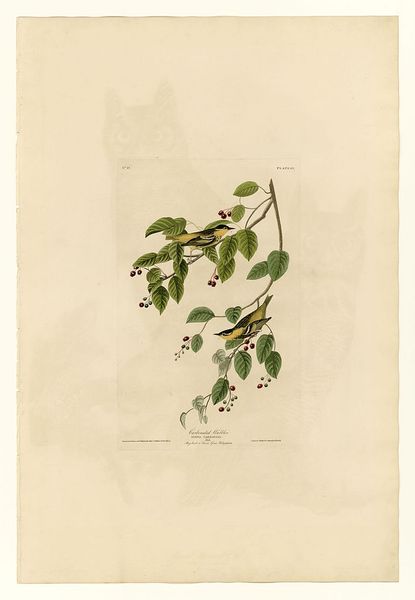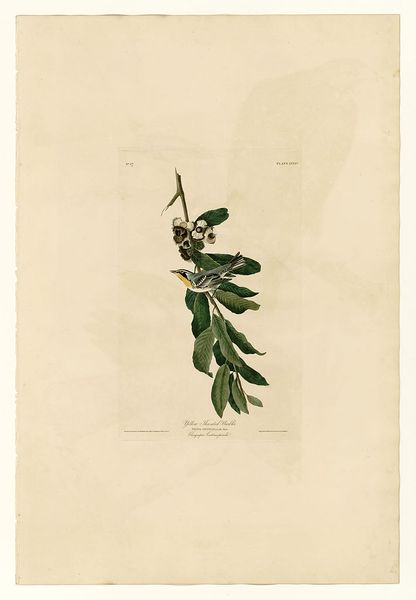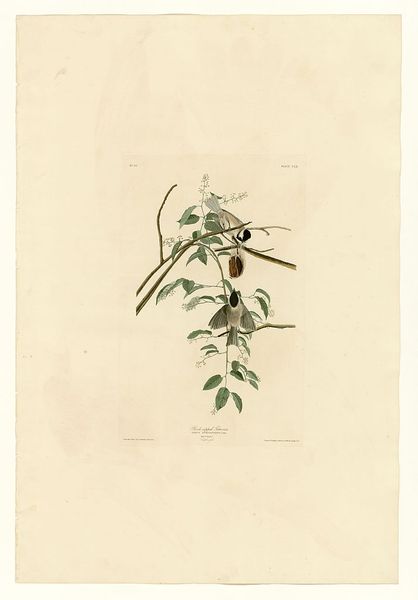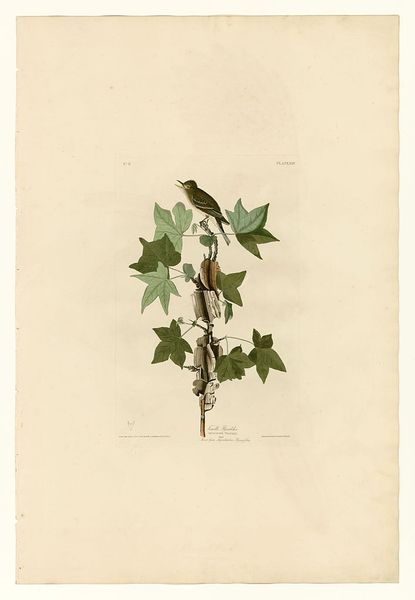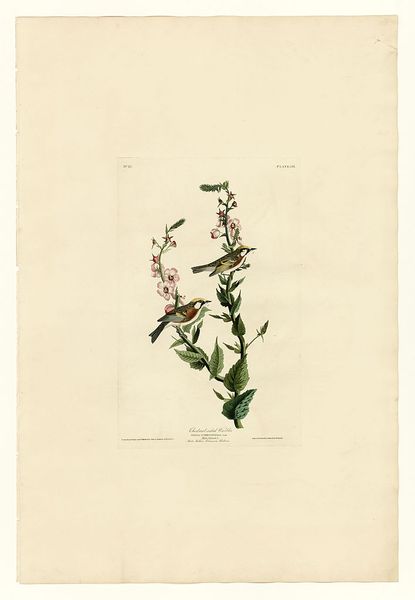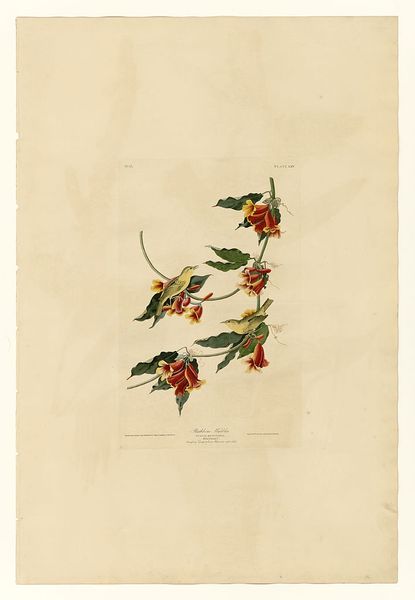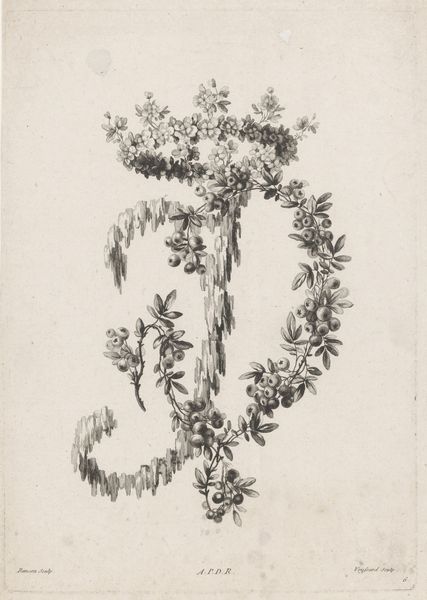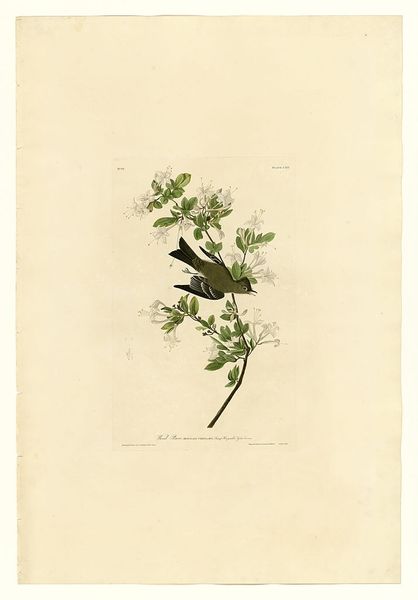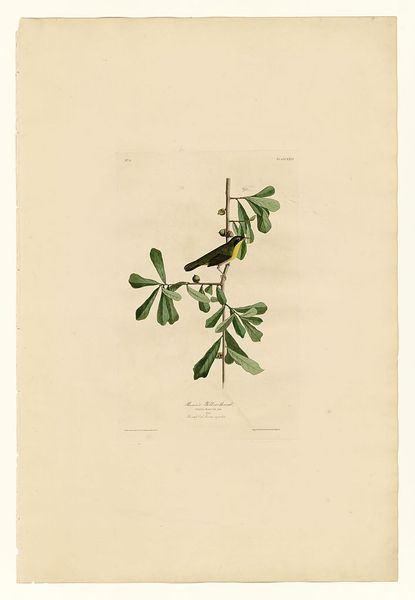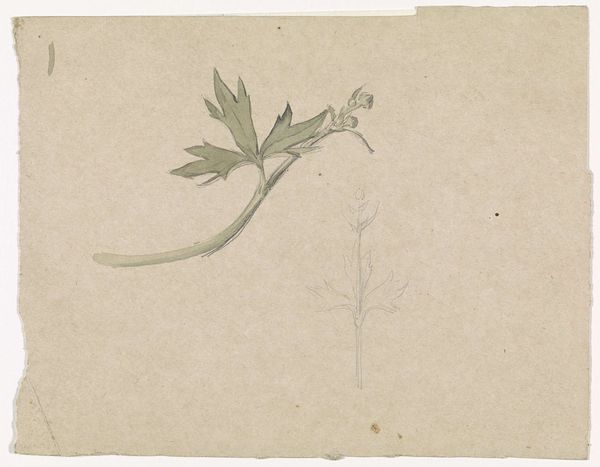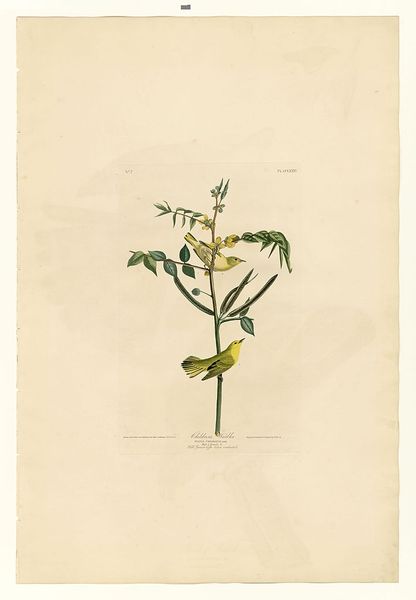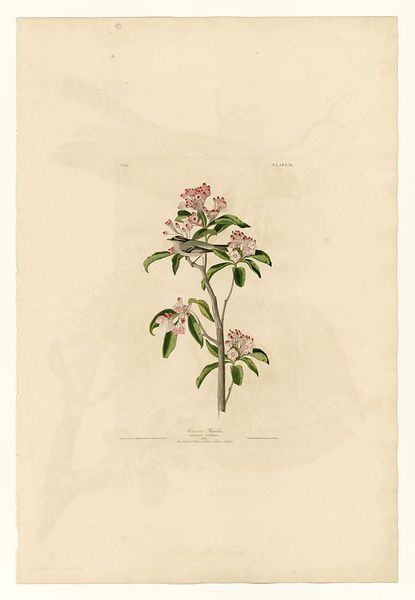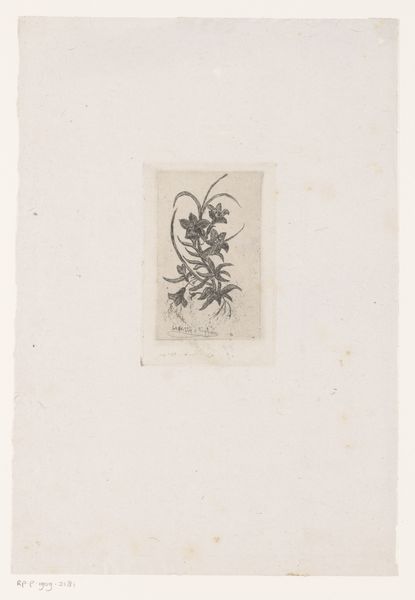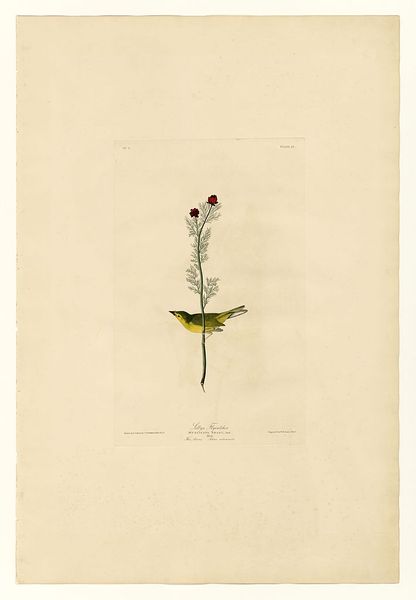
#
quirky illustration
#
blue ink drawing
#
childish illustration
#
quirky sketch
#
personal sketchbook
#
ink drawing experimentation
#
plant
#
ink colored
#
sketchbook drawing
#
watercolour illustration
#
botany
#
sketchbook art
Copyright: Public domain
Curator: Here we have "Plate 90 Black & White Creeper" by John James Audubon. It seems to be an illustration or study, rendered in ink and watercolor. Editor: My first impression is one of stillness, but a stillness full of observation. It is like capturing a fleeting moment, an interaction, that allows the artist to examine the plant and bird together. The palette is very subdued, adding a level of complexity and calm. Curator: Yes, and placing this artwork in the broader context of Audubon's oeuvre, we understand it not simply as a naturalistic study, but a document of the early 19th century’s understanding of the natural world—filtered through the lens of colonization and an inherent hierarchy of observation. How did Audubon's perspective as a white male shape these portrayals? Editor: That’s an excellent point. Institutionally, images like these circulated within scientific circles, reinforcing particular power dynamics through knowledge dissemination. There’s a beauty here, undoubtedly, in the delicate brushwork and careful detail, but we have to acknowledge how such images also became tools to rationalize human intervention in the landscape and the subsequent displacement of indigenous populations. Curator: Absolutely. And even aesthetically, the stark contrast in the bird's black-and-white plumage draws attention. It acts almost as a symbolic representation of this tension. The creeping vine it perches upon further suggests fragility, highlighting nature’s precarity, and maybe even hinting at ideas about the exploitation of the natural world during that period. Editor: The creeper itself becomes a loaded image when viewed through this historical framework, a potent symbol that embodies environmental concerns which carry through to the modern age. I’m intrigued by the negative space too; so much of the paper is untouched. This emptiness underscores the solitude, and speaks to a broader historical narrative regarding humanity’s changing role within our natural environments. Curator: Thank you. Considering all the aspects in Audubon's art encourages critical conversations about history, power, and representation—inviting all of us to actively reflect on the complexities embedded within nature studies. Editor: Indeed, viewing "Plate 90" and similar works is a reminder that even seemingly objective renderings of nature can hold deeply relevant insights into the prevailing perspectives during their time.
Comments
No comments
Be the first to comment and join the conversation on the ultimate creative platform.
